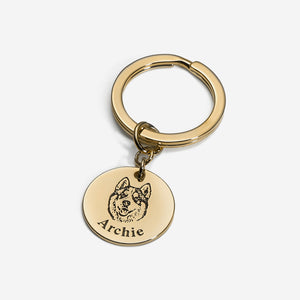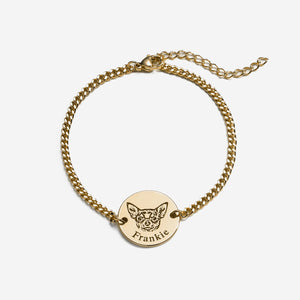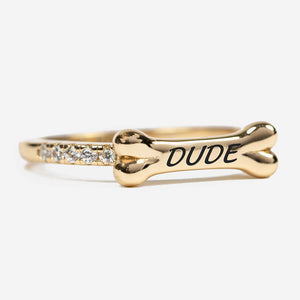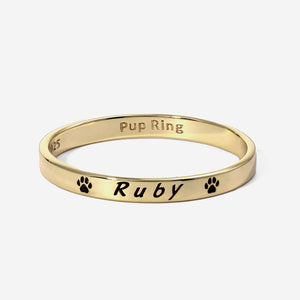Did you know that you probably have one of the most interesting, versatile training tools you can enjoy with your dog already in your house? You probably receive these on a regular basis if you do any kind of online shopping, or just about any time you open a package. Consider this: your dog can do all sorts of incredible things with just a cardboard box, all you need is some imagination. We’re all card-bored at home right now, so might as well make the most of it!
By the way, not only is it a way to pass the time, this exercise is incredible for getting a deeper understanding and appreciation for dog training. Explore your dog’s natural curiosity, mind games, and shaping new behaviours! If you don’t have a lot of experience training your dog, this freestyle session is a great way to explore the possibilities that abstract and open training can bring!
You’re probably thinking, “It’s just a box. Why should my dog or I care about it?” Well, the box becomes interesting when you make it interesting!
Step 1: Make the box interesting!
The very first thing you can do with your box is just set it out and watch as your dog investigates. Encourage and reward them just for checking it out! Observe and see if they do anything interesting or cute, and if they do, you can give them a treat, and then start to attach a command to the desired behaviour.
If you would prefer some more concrete direction, the easiest way to get started is to get your dog to step inside the box. Your dog may choose to get in the box on its own, or you might need to encourage them to do so. It’s kind of fun to watch them try to figure out what you want! I had to stand in the box and call my dog over “come here!” and he walked circles around the box for about 45 seconds before trying to put a paw in. It was really fun to see him thinking about what to do. After getting 2 paws in, I did a treat and praise. I stepped backwards out of the box, and he stood there for a few moments as I tried my “closer!” command. Eventually he stepped all four paws in and got a great big “good job” with a treat jackpot!
If you want, you can stick to this behaviour for a while to tire out your dog! Just putting in the effort to get in and out of the box is a little more exercise than just walking around the room. Of course, this could get boring, so feel free to move on whenever you like!
Step 2: Trying familiar commands in the box
For the next trick I taught my dog, I gave him a “sit” a few times before it clicked and he plopped right down snugly in the box. It was just barely big enough for him to stand in and honestly it was pretty hilarious to see my dog just in the middle of a room chilling in a box just barely big enough to exist in. I guess it probably took a bit of dexterity to get positioned just right, so bonus points for the extra effort!
Once your dog is sitting in the box, you can start asking for tricks it already knows. It was really fun with my dog! Watching him tilt his head, wiggle around in excitement as he tried lots of different things he already knew I liked to figure out what I wanted next. It’s probably the most fun, interactive game I have EVER played with him. I’ve never seen him so eager to try new things!

As an example, one of the special commands I taught my dog before iis “paws up”- if I’m sitting, he lays his front legs across my lap. If I’m standing, it’s my command for him to step up on his hind legs and lean into me for a hug or comfort. I decided this would probably be the most challenging known command I could give him in the box- his back feet would be on the cardboard, a surface he’s not familiar with. He tried to walk out of the box a few times to do it, so I continued to give directions like “no” or “almost!” to help him know when he was getting closer or further from the correct behaviour. (C'mon, look at that proud little face! Also say hi to Cookie)
*Super duper training tip: I use “uh-uh” as our full-stop-doing-that-thing-right-now command. That way I can reserve a curious-sounding “no” as a sign he’s headed the wrong way while we learn new skills.. Hot/cold words are extremely helpful in guiding your dog to new behaviours, so if you don’t have one yet, consider adding it to your training regiment!
Step 3: Learning brand new tricks using the box
Once you’re in the mood to try something else, if the box you have is large and sturdy enough, you can try to get your dog to stand or sit on top of the box. You’ll want to hold onto it to make sure it doesn’t shift around as your dog steps up. Then you can do the same thing- try lots of different tricks while on top of the box!

If your only goal is a really quick way to wear your dog out. teach it to jump over the box! You’ll first need to teach your dog to jump for treats. Hold the treat above its head and wait for your to reach up for it. Each time you will want to hold the treat far enough that your dog isn’t just getting treats for sitting, but you are making progress where it has to reach further and further until it has to jump for the treat. Attach a “jump!” command to it if you want to. Only then will you start introducing objects for your dog to jump over, and before you know it you’ll have a little athlete on your hands!
If you really want to make your dog’s mind work overtime, turn the box upside down and have them watch as you place a favorite treat or toy underneath. Then you can just sit back and watch as your dog tries to figure out how to reach it! The first time I did this with Cookie, he was almost immediately able to push the box over enough that he could reach the treat. Since the flaps were stiff, there was a gap plenty big enough for him to hook his snout underneath to move the box. I tried again with the box’s edge totally flush with the floor, and he started to give up fairly quickly, so I moved it around a bit to help him out.
The reason I helped him get the treat was because it’s important not to let your dog get too frustrated- you don’t want them giving up right away, because that takes away all the fun. You’ll want to give your dog hints or directions when their curiosity starts to turn into frustration.
Step 4. Learning to shape complex behaviours
If you are ready for a challenge, here is where the advanced training comes in. When you are teaching something new that involves multiple steps to reach a goal, or includes behaviour not natural to a dog, you’ll need to do what is called “shaping”. It’s an abstract idea at first, but dogs are always looking to please us. The biggest hurdle in shaping is having effective communication with your dog. Since it doesn’t understand our language, you’ll need to be as consistent as possible with any commands or verbal guidance you give your dog.
Here are a couple of examples and guides for complex tricks you can teach your dog through shaping- pick up and carry the box to translate into other useful skills, or tip over and hide under the box for a fun party trick.
Super trick - Carrying the box around
If you want to teach your dog to pick up and carry the box, it can open up all kinds of now possibilities- carrying groceries or other containers, and learning to transport items in your dog’s mouth can be shaped even further into doing things like putting away their own toys, r grabbing a water bottle for you from the fridge!
The first step here would be to get your dog to put the edge of the box in its mouth, which might be a bit tricky. Try to start watching for things like resting their chin on the edge, or licking the box. This might actually be pretty tricky, and those “hot/cold” words we talked about earlier will be extremely helpful. Make every step in the right direction a big celebration, and if you use a clicker in training don’t be afraid to use it when you see a completed piece of the puzzle. Interrupting your dog with a treat won’t stop the behaviour, so don’t worry about your dog forgetting its progress. Your dog should continue to try completely new things once it figures out that’s what you want!

Once your dog puts the box in its mouth, you’ll want to look for any kind of movement. If your dog is too small or the box is too big you might need to settle for dragging around, but that’s okay. You’ve got a basic understanding of where to go from here, so once your dog is accustomed to moving the box around the room or house, you can do fun things like putting objects in it or giving directions to move it to specific locations!
Super trick- Hiding inside a tipped over box
This skill is more of a party trick than anything else, but it still might be funny to do, and your dog might even enjoy showing it off for guests if it finds the attention to be its own reward! Seriously, you won’t be able to contain yourself the first few times it happens!
You’ll want to start shaping this behaviour by watching for anything that might lead your dog to tipping the box over on its side. Look for things like pawing at the side of the box, then any force applied to the side of the box. Just like before, it’s a game of hot and cold. Once your dog can tip the box onto its side, your next goal will be to tip it over again in a direction that would push it upside down. Then you just have to have your dog do that while positioned so that the box falls on top of it. Voila! Your dog is a turtle and can zoom around the room like Snake in Metal Gear Solid. Except way more cute and funny.
Safety
As always, it’s important to keep safety in mind with your dog! There are some important safety tips and rules to follow with this topic.
- You should supervise your dog anytime they are interacting with the box. You don’t want them to do anything dangerous, like eating the cardboard or falling over or off of the box.
- You should make sure the box is safe and secure- nothing sharp sticking out such as staples, and if you plan to have your dog try sitting on the box, it needs to be secure enough that it won’t collapse.
- Finally, if your dog is going to be jumping over the box, make sure it is an appropriate height. Taller boxes can be fun if your dog has the dexterity and skill to use them, but you need to start small!
Congratulations! Endless opportunities have now opened up for you through the power of shaping, all thanks to your surprisingly magical box! Thanks for reading and I hope that this guide has helped solve any card-boredom you may have right now!







